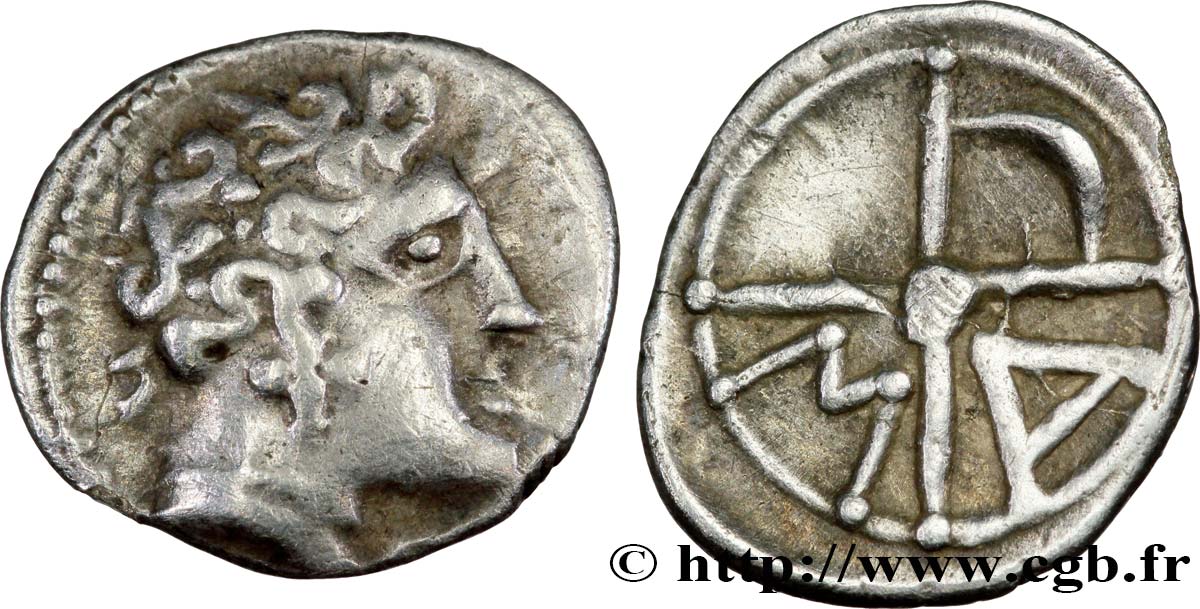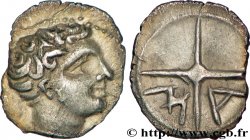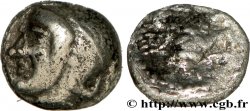Live auction - bga_340264 - MASSALIA - MARSEILLE Obole MA, tête à droite, imitation au croissant
You must signin and be an approved bidder to bid, LOGIN TO BID. Accounts are subject to approval and the approval process takes place within 48 hours. Do not wait until the day a sale closes to register. Clicking on "BID" constitutes acceptance of the terms of use of cgb.fr private live auctions.
Bids must be placed in whole Euro amounts only. The sale will start closing at the time stated on the item description; any bids received at the site after the closing time will not be executed. Transmission times may vary and bids could be rejected if you wait until the last second. For further information check the Live auction FAQ
All winning bids are subject to a 18% buyer’s fee.
All winning bids are subject to a 18% buyer’s fee.
| Estimate : | 800 € |
| Price : | 450 € |
| Maximum bid : | 470 € |
| End of the sale : | 31 March 2015 14:55:09 |
| bidders : | 1 bidder |
Type : Obole MA, tête à droite, imitation au croissant
Date: c. 121-82 AC.
Mint name / Town : Marseille (13)
Metal : silver
Diameter : 10 mm
Orientation dies : 3 h.
Weight : 0,50 g.
Rarity : R3
Coments on the condition:
Flan large avec des types complets et particulièrement bien centrés. Patine grise, sur un métal lisse et brillant avec une légère irisation
Catalogue references :
Obverse
Obverse legend : ANÉPIGRAPHE.
Obverse description : Tête stylisée à droite, une sorte de pendant d’oreille.
Reverse
Reverse legend : M-A DANS LES 3E ET 4E CANTONS, LETTRES BOULETÉES.
Reverse description : Roue à quatre rayons avec moyeu central ; un croissant dans le second canton.
Commentary
Il semblerait que les monnaies de cette série appartiennent à la péninsule ibérique. Le prototype est clairement marseillais et la circulation aurait été assez large. Certaines oboles reprises par L. Vilaronga ont un petit animal en plus des lettres M - A et du croissant (cf. n° 43-53, p. 43-44).
Ces monnaies sont très rares et c’est la première fois que nous en proposons un exemplaire. Le n° 132 du Villaronga auquel correspond cette obole, est classé en R7.
Mêmes coins de revers que les n° 635-637 du Tome 3 sur les Drachmes ibériques et leurs divisions, de L. VIllaronga.
Ces monnaies sont très rares et c’est la première fois que nous en proposons un exemplaire. Le n° 132 du Villaronga auquel correspond cette obole, est classé en R7.
Mêmes coins de revers que les n° 635-637 du Tome 3 sur les Drachmes ibériques et leurs divisions, de L. VIllaronga.








 Report a mistake
Report a mistake Print the page
Print the page Share my selection
Share my selection Ask a question
Ask a question Consign / sell
Consign / sell
 Full data
Full data















